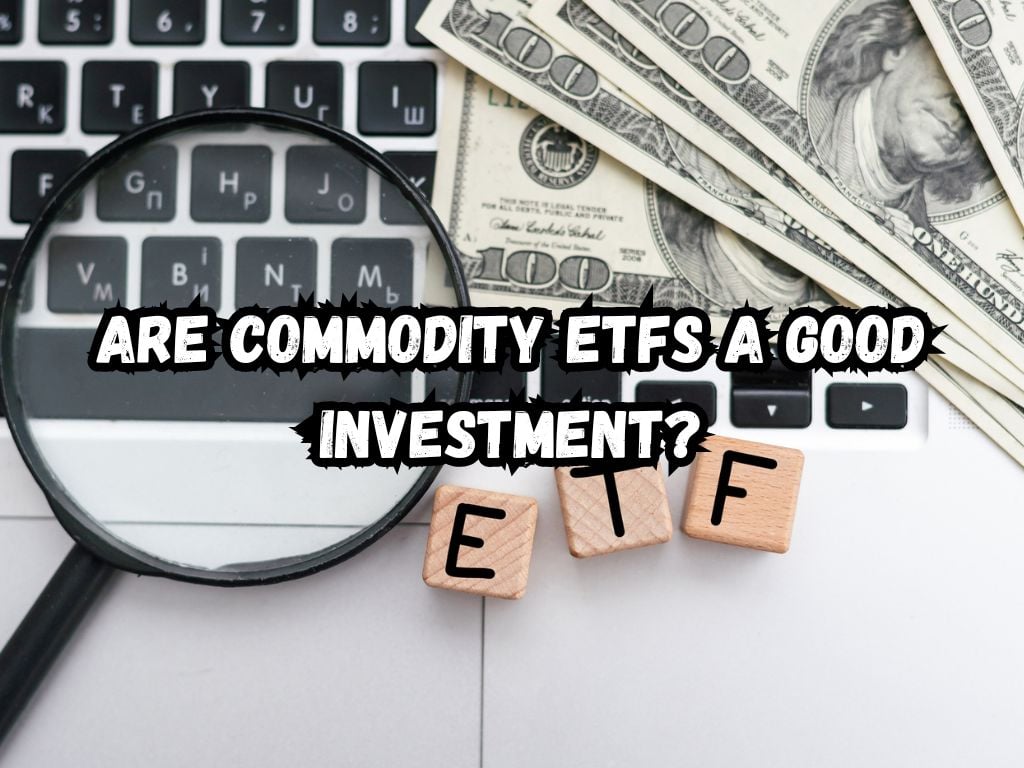In the realm of investing, Exchange Traded Funds (ETFs) have carved out a significant niche, offering investors an efficient way to gain exposure to various asset classes.
Among these, Commodity ETFs are particularly intriguing, allowing investment in physical commodities (like gold, oil, and agricultural products) or commodity futures directly.
This guide delves deeply into the world of Commodity ETFs, examining their structures, their benefits, the associated risks, and their place in a diversified investment portfolio.
Are Commodity ETFs a Good Investment?
Definition and Overview
Commodity ETFs are pooled investment vehicles that aim to track the performance of one or a basket of commodities. These ETFs can achieve their investment objectives by either holding physical commodities or using derivative contracts such as futures and options.

Types of Commodity ETFs
Commodity ETFs manifest in various forms, primarily categorized into three types:
Physical Commodities ETFs: These funds physically hold commodities, like gold or silver, in secure vaults.
Futures-Based ETFs: These ETFs do not hold physical commodities but instead hold futures contracts on commodities.
They are more common for commodities that are impractical to store physically, such as oil or agricultural products.
Commodity-Related Stocks ETFs: Rather than investing in commodities directly, these ETFs invest in stocks of companies involved in the production, mining, or sales of commodities.
The Attraction of Commodity ETFs
Investors are drawn to commodity ETFs for several reasons, including the ease of access to the commodities market, potential for portfolio diversification, and inflation protection.
The simplicity of buying and selling ETF shares on a stock exchange, much like individual stocks, adds to their allure.
Advantages of Commodity ETFs
Portfolio Diversification
Commodities often have a low or negative correlation with stocks and bonds, making them excellent tools for diversification. Adding commodity ETFs to a portfolio can reduce overall volatility and risk.
Inflation Protection
Historically, commodities have served as effective hedges against inflation. When the value of currency weakens, commodity prices often increase, thus protecting the real purchasing power of an investment portfolio.
Market Access and Convenience
Commodity ETFs offer a straightforward way for investors to gain exposure to commodity markets without the complexities of futures trading or the challenges of holding physical commodities.
High Liquidity
Commodity ETFs are traded on major stock exchanges, ensuring high liquidity levels. Investors can easily buy or sell shares at the market price during trading hours.
Lower Costs
The expense ratios of commodity ETFs are typically lower than those of actively managed funds and direct investment in physical commodities, making them a cost-effective option.
Risks and Downsides
While commodity ETFs present numerous benefits, potential investors should also be cognizant of the risks and challenges associated with these investments.
Market Volatility
The commodities market is notoriously volatile, influenced by a myriad of factors including geopolitical events, natural disasters, and changes in supply and demand dynamics. This can lead to significant price swings.
Contango and Backwardation Effects
Contango occurs when futures prices are higher than the current spot price, which can erode returns for ETFs rolling futures contracts. Backwardation, the opposite scenario, can enhance returns but is less common.
Limited Diversification Benefits
While commodity ETFs can diversify a portfolio, over-reliance on them, especially within a single commodity, can introduce concentration risk.
Management Risks
All ETFs come with the risk of management shortcomings. Poor strategic decisions by the fund managers can detract from the overall performance of the ETF.
Ideal Candidates for Commodity ETF Investment
Investing in commodity ETFs is not suitable for everyone. Potential investors should consider their risk tolerance, investment horizon, and market knowledge.
Assessing Risk Tolerance
Given the inherent volatility of commodities, individuals with a higher risk tolerance and capacity for short-term losses in exchange for potential long-term gains may find commodity ETFs appealing.
Understanding Investment Horizons
Commodities can exhibit cyclical price movements over the short term. A longer investment horizon can help mitigate the effects of volatility.
Acquiring Market Knowledge
A basic comprehension of the commodities market dynamics can be beneficial, though not strictly necessary due to the simplicity of ETFs.

Strategic Considerations for Commodity ETF Investors
Strategic Asset Allocation
Commodity ETFs should be viewed as part of a broader investment strategy, typically occupying a small, diversified segment of an investment portfolio.
Rebalancing
Periodic portfolio rebalancing can maintain the desired risk level and alignment with investment goals, especially important in volatile markets.
Tax Considerations
Commodity ETFs may have unique tax implications depending on their structure, necessitating consultation with a tax professional.
Getting Started with Commodity ETFs
Conducting Research
A thorough examination of available commodity ETFs, their management teams, underlying assets, and cost structures is crucial before making investment decisions.
Watching Market Trends
Staying informed about global economic and geopolitical developments can provide insights into potential commodity price movements.
Consulting Financial Professionals
Especially for novice investors, seeking advice from financial advisors with expertise in commodity investments can guide strategic decisions.
Conclusion
Commodity ETFs offer a unique blend of opportunities and challenges. They present a viable option for those looking to diversify their investment portfolios, hedge against inflation, and gain exposure to the commodities market with relative ease.
However, the volatility of commodity prices and associated risks means that commodity ETFs may not be suitable for all investors.
A well-considered approach, taking into account personal investment goals, risk tolerance, and market understanding, is essential in determining whether commodity ETFs align with one’s investment strategy.


 Tags:
Tags:










